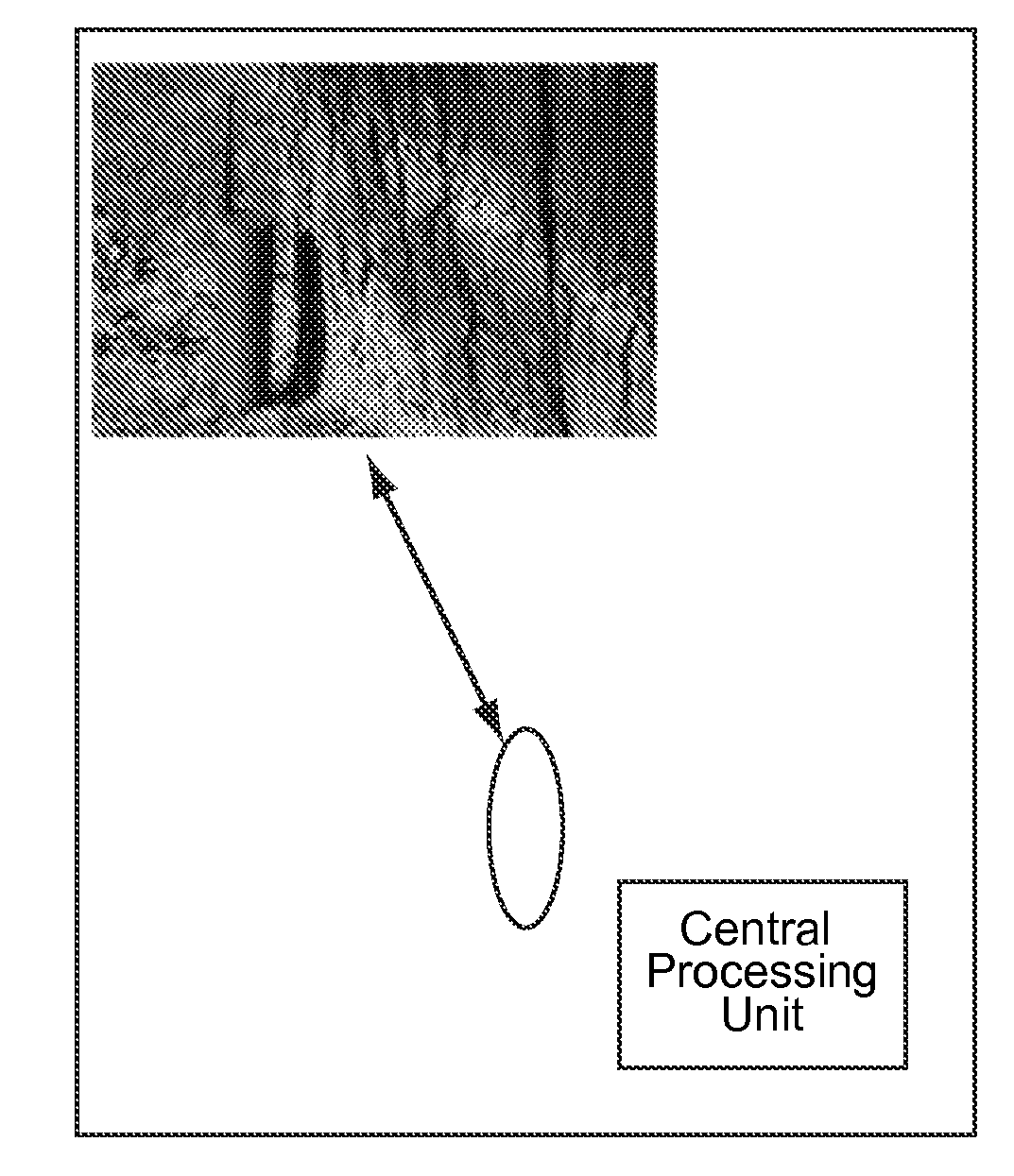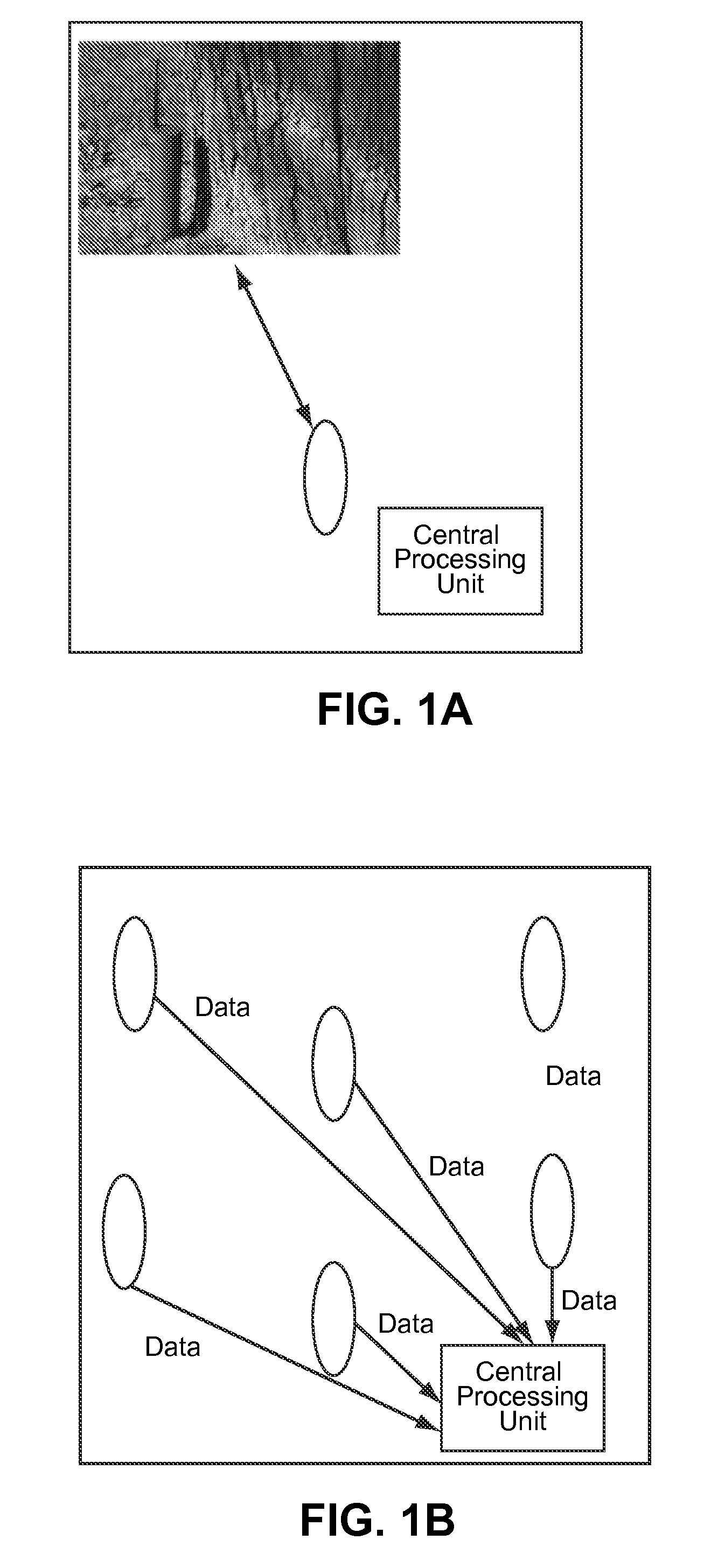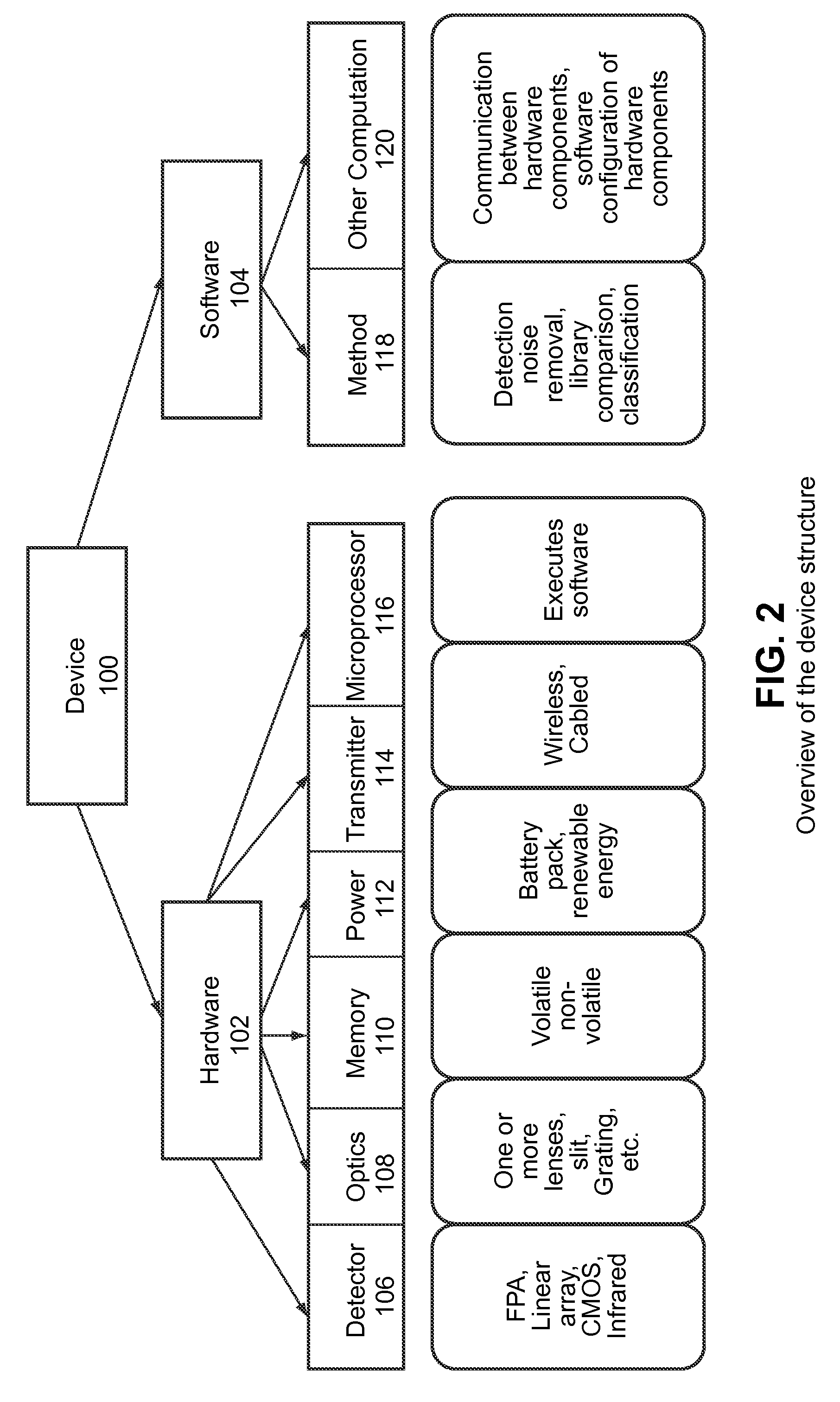Method and device for detecting and classifying moving targets
a technology for moving targets and detection methods, applied in scene recognition, instruments, computing, etc., can solve the problems of large power consumption, large power consumption, complex detection algorithms, and dependence on specific sensors, and achieve the effect of reducing the detector's sample ra
- Summary
- Abstract
- Description
- Claims
- Application Information
AI Technical Summary
Benefits of technology
Problems solved by technology
Method used
Image
Examples
Embodiment Construction
Exemplary Illustrative Non-Limiting Overall System
[0081]The exemplary illustrative non-limiting device may be used by itself or as part of a group distributed throughout an area. A non-limiting example of the device by itself and as part of a group of similar or dissimilar devices is shown in FIGS. 1 and 2, respectively. The upper left corner of FIG. 1 shows a device in an inconspicuous location next to a tree. These devices can elect to store the data and / or transmit data wirelessly and / or by wire to a main processing unit. The data transmitted may contain information as to the type and corresponding number of each object the device classified and / or it may contain image or images as seen by the detector. Alternatively, the data may take an entirely different form. The data may be transmitted upon classification or the device may be set up to transmit data periodically regardless of whether an event has occurred.
[0082]As shown in FIG. 2, each device 100 in the exemplary illustrativ...
PUM
 Login to View More
Login to View More Abstract
Description
Claims
Application Information
 Login to View More
Login to View More - R&D
- Intellectual Property
- Life Sciences
- Materials
- Tech Scout
- Unparalleled Data Quality
- Higher Quality Content
- 60% Fewer Hallucinations
Browse by: Latest US Patents, China's latest patents, Technical Efficacy Thesaurus, Application Domain, Technology Topic, Popular Technical Reports.
© 2025 PatSnap. All rights reserved.Legal|Privacy policy|Modern Slavery Act Transparency Statement|Sitemap|About US| Contact US: help@patsnap.com



